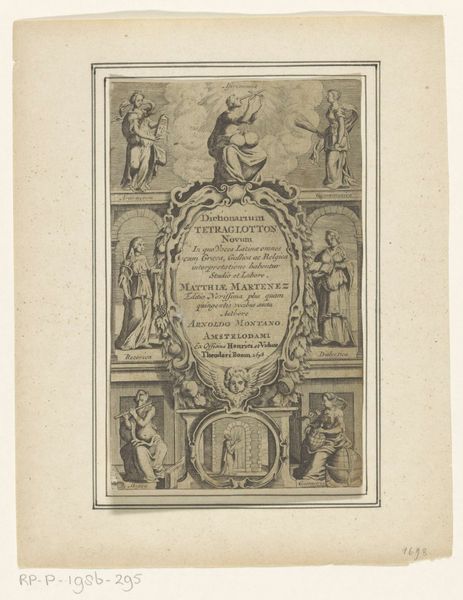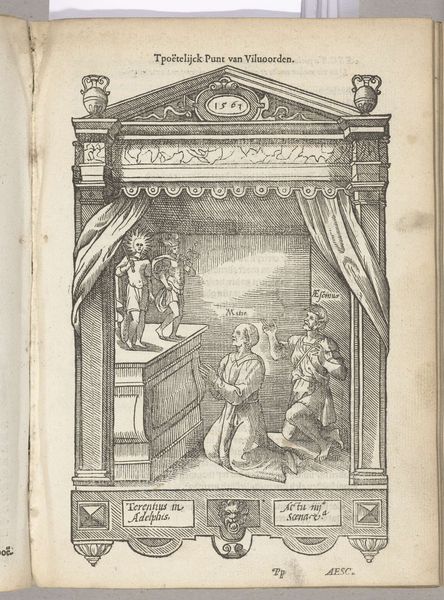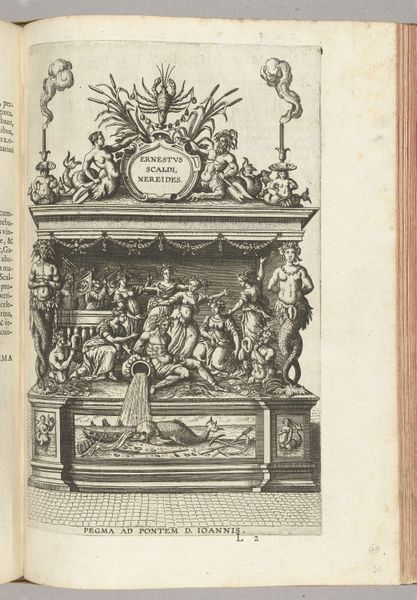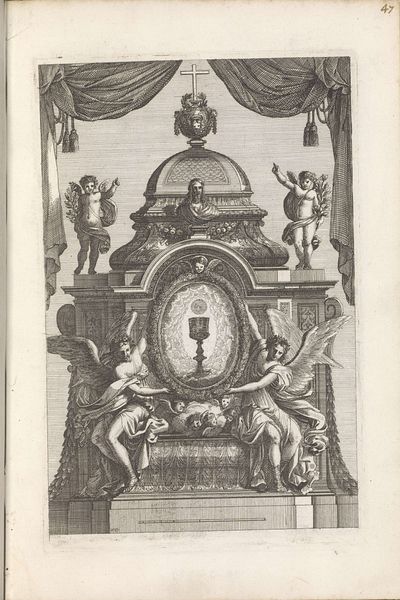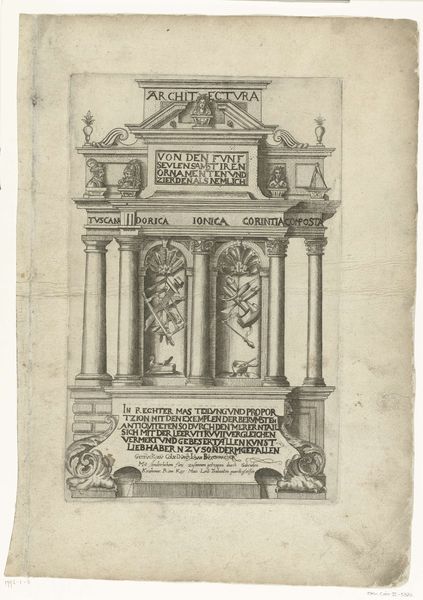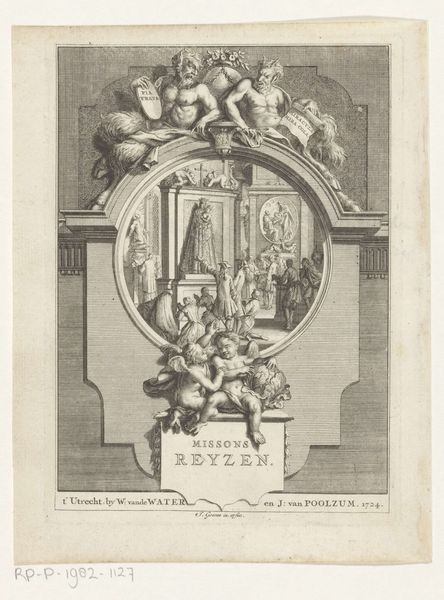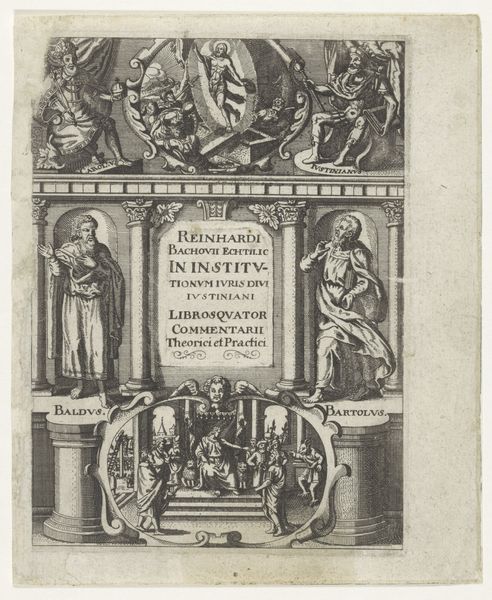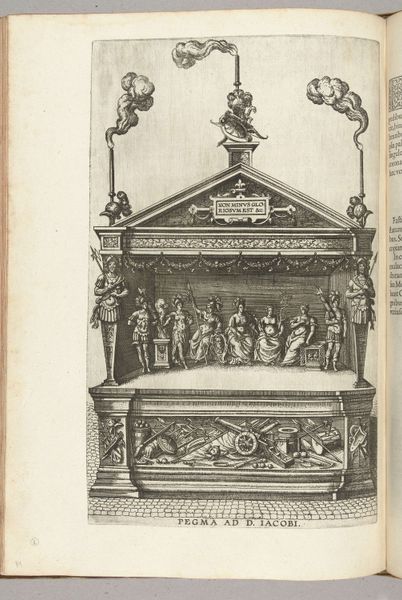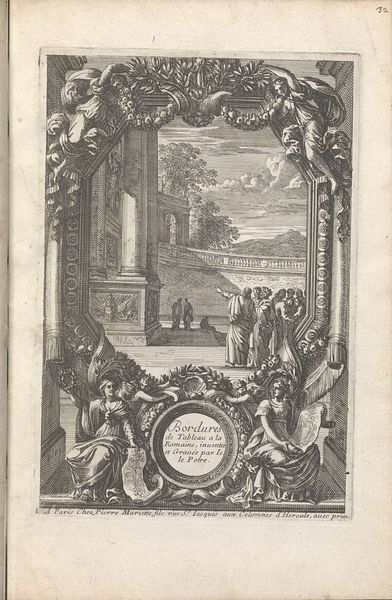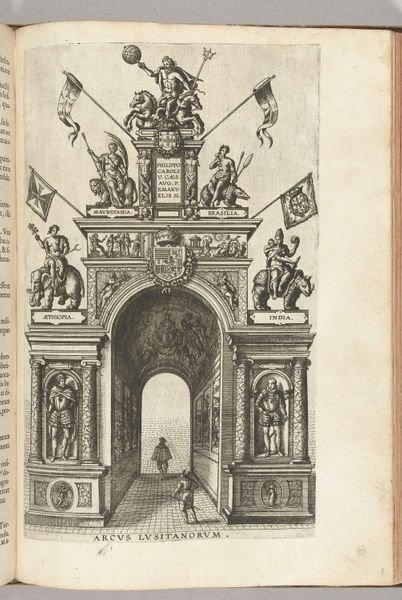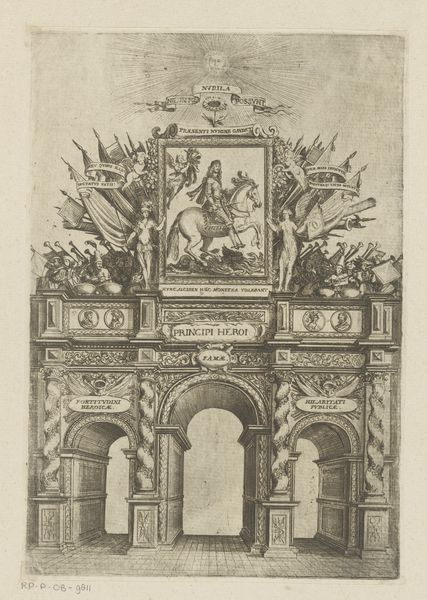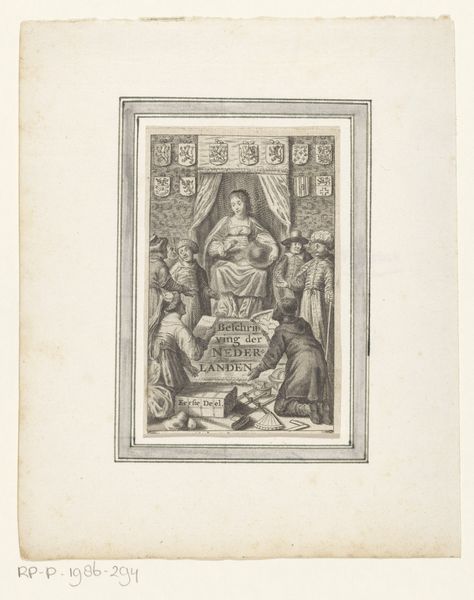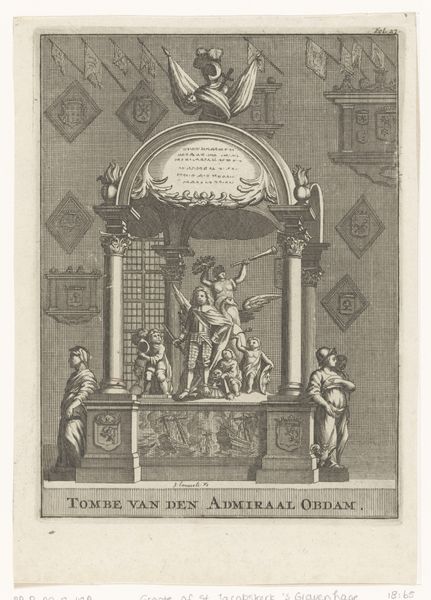
print, engraving
#
baroque
# print
#
cityscape
#
genre-painting
#
engraving
Dimensions: height 99 mm, width 58 mm
Copyright: Rijks Museum: Open Domain
Editor: This engraving from 1652 is called "Monument voor Tomasso Aniello." It's unsigned, so we don't know who created it. The level of detail is amazing, considering it’s just a print! The bottom half shows a city on the water, with what looks like a memorial on top... What do you see when you look at this work? Curator: Well, immediately I see an effort to publicly commemorate Tomasso Aniello, but the way in which he's memorialized tells us a lot about the sociopolitical climate in which this print was produced. Given the timeframe, we can interpret the “monument” more as a piece of political commentary, and less of a traditional memorial, can’t we? Editor: Political commentary? How so? Curator: Think about it. It is titled a “monument”, yet is a printed image readily available for mass consumption, that hardly aligns with our traditional understanding of grand monuments found in city squares, built from bronze or stone. The architecture around the inscription almost seems like a stage. Notice how figures flank either side, observing some drama about to unfold. The winged creatures almost seem satirical and performative rather than reverential. And that scene of the city below...it all points to a carefully constructed public image. What kind of narrative do you think this image is trying to create about Tomasso? Editor: So, you’re suggesting this isn’t just a straightforward memorial, but something that uses Tomasso's memory to make a statement? Almost like propaganda, even? Curator: Precisely! And understanding that tension—between genuine remembrance and politically motivated image-making—is crucial when looking at historical art like this. The public role of art takes center stage here. Editor: That's fascinating. I never would have thought to look at it that way. It's like the artist is using the act of commemoration itself as a political tool. Curator: Exactly! It shows us how even something like a memorial can be shaped by the political currents of its time. It’s important to always look at what the patrons or social environment demanded from the artists.
Comments
No comments
Be the first to comment and join the conversation on the ultimate creative platform.
